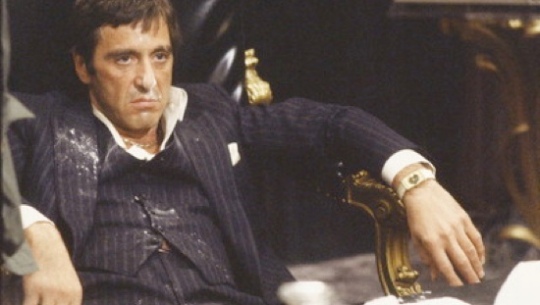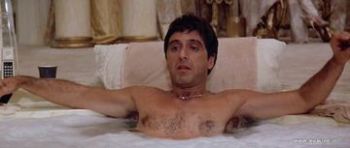Goodykoontz and Jacobs (2011) lists the five types of actors. They are impersonator, interpreter, personality, wild card, and character. I chose to analyze three actors from “The Godfather”. Al Pacino (Michael Corleone) is the personality actor. Diane Keaton (Kay Adams-Corleone) is the character actor. Alex Rocco (Moe Greene) can be classified as an impersonator.
Goodykoontz and Jacobs (2011) states that “strong personality can make it difficult for the audience to differentiate between the actor and the character” (p. 63). This statement describes Al Pacino’s identity as Michael Corleone perfectly. Pacino’s identity is pretty much synonymous with that of Michael Corleone. According to Goodykoontz and Jacobs (2011) the actors often play similar roles in other films. Al Pacino has played very similar roles in other films. These roles include movies like “Scarface” and “Carlito’s Way”. The following video clip provides an excellent example of how Pacino owns the role of Michael Corleone.
Character actors can play many different roles and adapt easily to scripts and directors (Goodykoontz & Jacobs, 2011, p. 64) This is a great description of Diane Keaton. In “The Godfather”, Keaton played Kay Adams-Corleone, the second wife of Michael Corleone. Her role in “The Godfather” was a breakthrough role. It would be sometime before Keaton became the well known actor she is today. The clip below shows Keaton in her role as Kay Adams-Corleone before she became the well known actress she is today.
Alex Rocco’s role as Moe Greene in “The Godfather” can be characterized as an impersonator. According to Goodykoontz and Jacobs (2011), an impersonator “has simply copied manner, dialect, and behavior of a character, instead of creating the character” (p. 62). While well done, it is obvious that Rocco is acting the part of Moe Greene. Unlike Pacino who owns the role of Michael, Rocco has simply learned the role of Moe Greene.
Looking at Pacino’s works in other films, I would place him in the personality category in those films as well. He owns the role of Tony Montano (“Scarface”), Carlito Brigante (“Carllito’s Way”), and Tony D’Amato (“Any Given Sunday”) – which surprisingly was not in the gangster film genre which most movies with Al Pacino are in. This confirms that Pacino takes his job seriously, and that he is aiming to give the audience what they are expecting from the characters he portrays in different films.
References:
Goodykoontz, B., & Jacobs, C. P. (2011). Film: From watching to seeing. San Diego, CA: Bridgepoint Education, Inc.
Movieclips. (2011, Nov. 22). It Was an Abortion (1974) – The Godfather: Part 2 (4/8) Movie CLIP HD [Video file]. Retrieved from https://www.youtube.com/watch?v=_g9RI0GgRIQ&list=PL67FAA6B7AEA19096&index=4
Movieclips. (2011, Nov. 22). You’re Nothing to Me Now (1974) – The Godfather: Part 2 (3/8) Movie CLIP HD [Video file]. Retrieved from https://www.youtube.com/watch v=5Weaop_aiTg&list=PL67FAA6B7AEA19096&index=3

